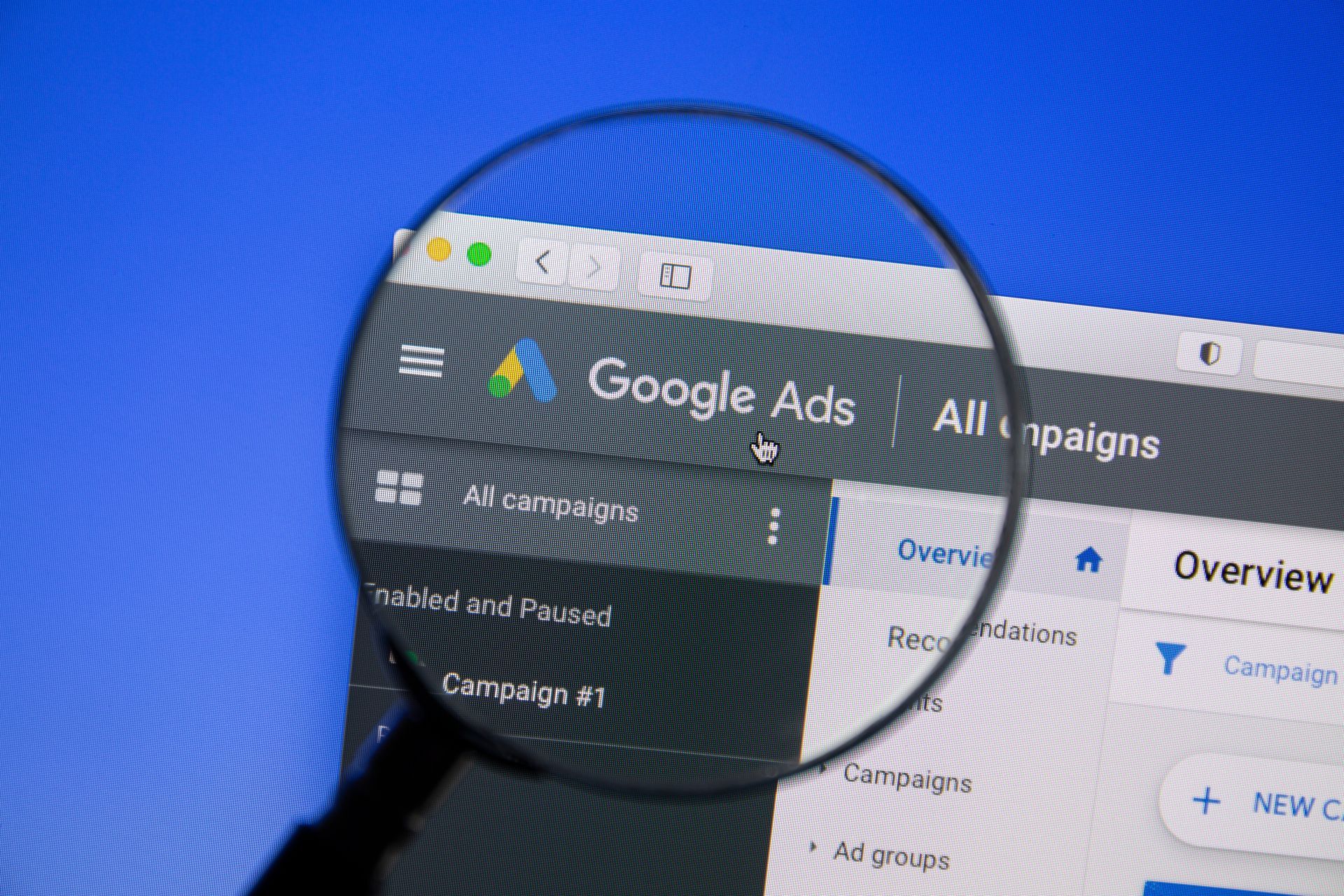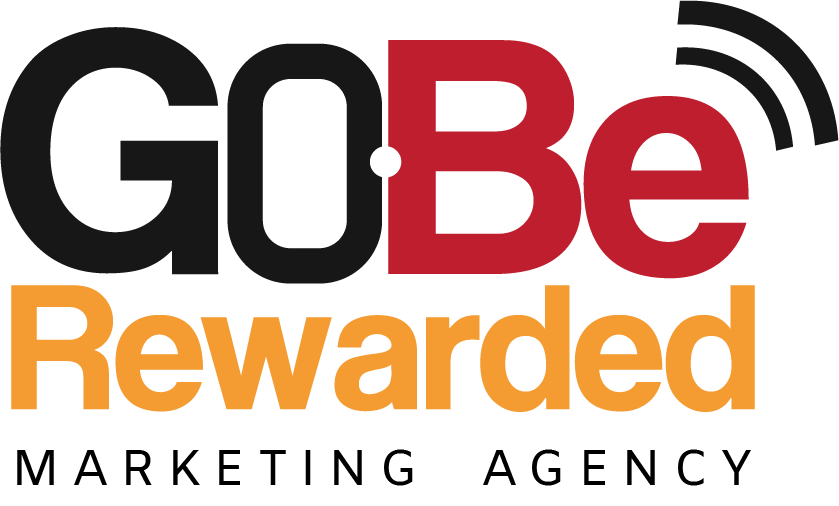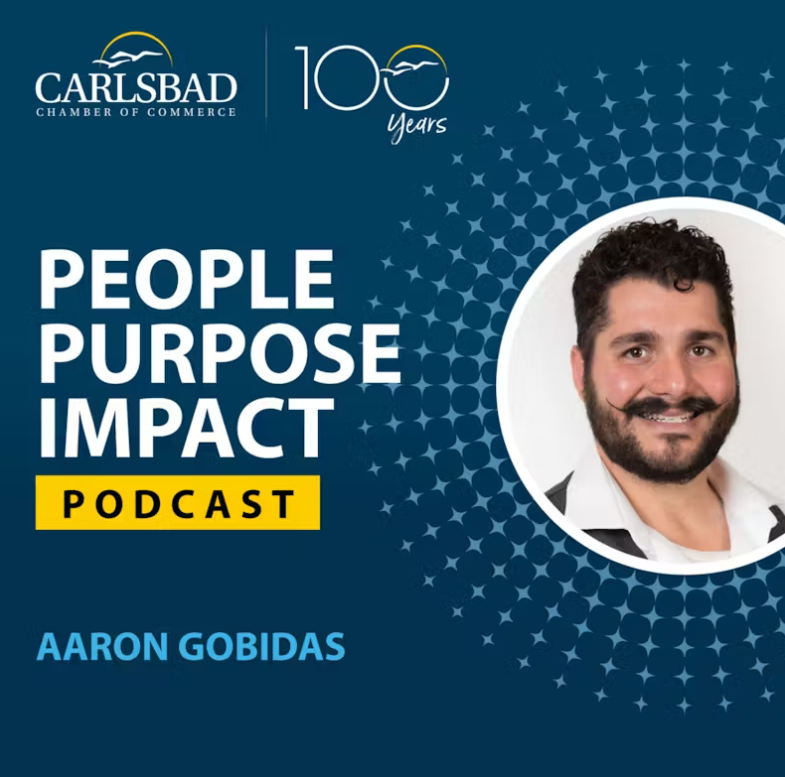Aaron Gobidas, of GoBeRewarded, featured on Carlsbad's People, Purpose, Impact Podcast
Aaron Gobidas • April 9, 2024
Aaron Gobidas discusses long form video content with Carlsbad Chamber CEO, Bret Schanzenbach.
Aaron and Bret have a longstanding friendship dating back to 2015, when Aaron made the move from military service to the realms of marketing and entrepreneurship. In this particular podcast episode, Aaron delves into his motivations for becoming a member of the Chamber of Commerce, subsequently leading into insightful discussions on podcasting and the creation of long-form video content. If you're contemplating the development of extensive content for your brand, this episode is a must-listen.

February 17, 2025
Digital marketing is essential for San Diego businesses looking to attract local customers, increase brand awareness, and drive sales. However, many companies fall into common pitfalls that can waste time, money, and effort. Whether running Google Ads, managing social media, or optimizing your website for search engines, avoiding these mistakes will help you maximize your marketing success. Here are five common digital marketing mistakes San Diego businesses make—and how to fix them.

December 18, 2024
Building a strong Local SEO strategy is essential if you're a San Diego small-business owner looking to attract more local customers. Local SEO ensures your business shows up when people search for products or services "near me" or within your specific area. Your Google Business Profile (formerly Google My Business) is at the heart of any effective Local SEO strategy. Step 1: Claim and Verify Your Google Business Profile The first step in optimizing your Google Business Profile is to claim and verify it. Visit Google Business and sign in with your Google account. Search for your business name. If it appears, claim it; if not, create a new profile. Complete the verification process. Google typically sends a postcard to your business address with a verification code, though other options, such as email or phone verification, may be available. Why This Matters: Verification signals to Google that you are the legitimate business owner, giving you control over the profile. Step 2: Fill Out Every Section of Your Profile A complete profile increases your chances of ranking higher in local search results. Ensure all information is accurate and detailed. Business Name: Use your official business name. Category: Select the most relevant category (e.g., "Coffee Shop," "Landscaper"). Address: Provide your physical address if you serve customers on-site. Service Area: Define the areas you serve if you operate remotely or provide delivery. Hours: Keep your operating hours accurate, including holidays. Phone Number: Add a local, trackable phone number. Website: Link to your website or a relevant landing page. Pro Tip: To boost local relevance, include your San Diego neighborhood or region (e.g., "North Park," "La Jolla," etc.) in your profile. Step 3: Write an Optimized Business Description Your business description is a chance to introduce yourself, explain your offerings, and why customers should choose you. Use relevant keywords naturally, like "San Diego landscaping services" or "best tacos in Gaslamp Quarter." Focus on what makes your business unique. Keep it concise (750-character limit) and engaging. Example: "Located in the heart of Hillcrest, our San Diego coffee shop offers organic, locally roasted coffee and freshly baked pastries. We’re proud to be a community hub for locals and visitors alike!" Step 4: Upload High-Quality Photos and Videos Visual content helps your profile stand out and gives customers a better understanding of your business. Add photos of your storefront, interior, team, and products/services. Include a logo and a professional cover image. Upload short videos showcasing your services or testimonials. Pro Tip: Geo-tag your images before uploading them. This adds location data, which can improve local search rankings. Step 5: Collect and Respond to Reviews Customer reviews are critical for Local SEO and building trust with potential customers. Ask for Reviews: Encourage satisfied customers to leave reviews. For example, after a completed service, send a polite email or text with a direct link to your Google profile. Respond to Reviews: Thank customers for positive feedback and address negative reviews professionally and constructively. Pro Tip: Use responses to subtly reinforce keywords. For instance, "Thank you for choosing our San Diego HVAC services! We’re thrilled you were satisfied with the quick repair." Step 6: Use Google Posts to Engage Your Audience Google Posts allow you to share updates, promotions, events, and news directly on your profile. Keep posts brief but engaging, and include a clear call to action (CTA) such as "Learn More," "Call Now," or "Book Today." Update posts regularly to keep your profile fresh and relevant. Example Post: "🌞 Summer Special! Get 10% off landscaping services in San Diego this July. Book your appointment today and transform your outdoor space! Call us now." Step 7: Add Products and Services For businesses offering products or services, listing them on your Google Business Profile can provide additional visibility. Include detailed descriptions for each product or service. Use relevant keywords (e.g., "pool cleaning in San Diego"). Set competitive pricing if applicable. Example: Service: "San Diego Pool Cleaning" Description: " Our professional pool cleaning services ensure your pool stays sparkling clean and safe all year round." Step 8: Keep Your Profile Updated An updated profile can help your credibility and ranking. Regularly update your profile with: New photos or videos Changes to business hours Upcoming promotions or events Seasonal offerings Step 9: Monitor Insights and Adjust Your Strategy Google Business Profile provides valuable insights into how customers find and interact with your business. Search Queries: See what keywords people use to find your business. Customer Actions: Track how many people call, visit your website, or request directions. Photo Views: Analyze which photos resonate most with your audience. Use this data to refine your profile and improve engagement. Why Focus on Google Business Profile? Optimizing your Google Business Profile is one of the most effective ways to boost your Local SEO efforts for a local business in San Diego. In a competitive market like San Diego, this strategy ensures you stand out in local search results, attract more customers, and build long-term trust. Start optimizing your profile today, and watch your business climb the local rankings while drawing in more San Diego customers. Would you like an expert team to handle this for you? Contact GoBeRewarded today and ask about our Off-Page SEO package .

October 21, 2024
Google Ads is one of the most powerful tools for businesses looking to boost their visibility and drive traffic. But once your campaigns run, how do you make sense of the data you're seeing? Whether you’re a small San Diego business owner or just getting started with digital marketing, understanding how to analyze Google Ads data is key to refining your marketing strategies and improving your return on investment (ROI). This beginner’s guide will explain essential metrics to monitor and provide actionable tips for improving campaign performance. 1. Start with the Basics: Key Metrics to Watch Before diving into the complex details of Google Ads reporting, it’s important to understand the key metrics that give you insight into how your ads perform. These are the building blocks for improving your campaigns. a. Impressions Impressions tell you how often your ad is shown. It’s a useful metric for understanding the reach of your campaign. For example, if your ad for a San Diego home improvement service appears in front of 10,000 users, you’ve earned 10,000 impressions. However, impressions alone don't tell the full story, as your ad may be shown without being clicked. How to Use This Data: High impressions but low engagement (clicks) could indicate your ad isn’t resonating with your audience or that your targeting needs adjustment. b. Clicks The number of clicks your ad receives is one of the most direct indicators of interest. Clicks show how many people were intrigued enough by your ad to learn more. How to Use This Data: Many clicks are a good sign, but ensure you're driving quality traffic. If you get a lot of clicks but not many conversions, it may be time to refine your ad copy, landing page, or audience targeting. c. Click-Through Rate (CTR) CTR is the percentage of people who clicked on your ad after seeing it. It’s calculated by dividing the number of clicks by the number of impressions. How to Use This Data: A low CTR means many people see your ad but aren’t clicking. You may need to improve the ad copy, adjust your keywords, or revise your audience targeting. For example, if you're a San Diego café offering seasonal specials and see a low CTR on ads promoting them, it might be time to refresh your message or update your imagery. d. Conversion Rate Conversions happen when someone completes a desired action after clicking your ad, such as purchasing, signing up for a newsletter, or filling out a contact form. How to Use This Data: A low conversion rate could signal that your landing page isn’t effective. Ensure that the landing page reflects the ad's promise, is user-friendly, and has a clear call to action (CTA). e. Cost Per Click (CPC) CPC shows how much you’re paying for each click on your ad. This metric helps you gauge the cost-effectiveness of your campaigns. How to Use This Data: A high CPC might indicate you're in a competitive market or targeting highly sought-after keywords. If your budget drains quickly without enough conversions, consider refining your keyword strategy or adjusting your bids. f. Cost Per Conversion This is the average cost of acquiring one customer or lead from your ads. It's calculated by dividing the total cost of your ads by the number of conversions. How to Use This Data: If your cost per conversion is too high, you might need to narrow down your audience, optimize your landing pages, or rethink your keywords. 2. Audience Insights: Who’s Clicking on Your Ads? Understanding who engages with your ads is as important as the number of clicks. Google Ads provides detailed audience insights, which can help you refine your targeting. a. Demographics Check the age, gender, and location of users interacting with your ads. For instance, if you’re a local San Diego business, you’ll want to ensure that most of your clicks come from users within your geographical target area. How to Use This Data: If you notice most of your ad spend is going toward out-of-area clicks, adjust your location targeting to focus solely on San Diego and nearby cities. Similarly, if your services cater to specific demographics, such as seniors or young professionals, use the data to refine your ads for those groups. b. Device Performance See whether users are clicking from mobile, desktop, or tablet. This can offer insight into how your ads are performing across different devices. How to Use This Data: If most of your clicks come from mobile users but your conversion rate is low, it may be time to optimize your landing pages for mobile devices. For example, a San Diego restaurant may need to ensure its menu is easily read and navigated on smartphones. 3. Improving Your Campaign Performance Now that you understand the core metrics, let’s examine how to improve your Google Ads performance using the data you've gathered. a. Refine Your Keyword Strategy Keywords are the backbone of your Google Ads campaigns. Analyze your Search Terms Report to see which keywords drive clicks and conversions, and identify any that are wasting your budget. Actionable Tip: If certain keywords have high impressions but low CTRs, consider pausing them or adjusting your ad copy to match the search intent better. For instance, if you run a San Diego landscaping business and notice that “landscape design San Diego” leads to more conversions than “landscape San Diego,” focus more on the specific terms yielding results. b. A/B Testing Ads Running different versions of ads (A/B testing) allows you to see which ad copy, headlines, or images work best. Actionable Tip: Try different messaging for your San Diego business. For example, a local HVAC company could test ads focusing on “quick service” versus ads promoting “affordable rates” to see which resonates more with potential customers. c. Optimize Your Landing Pages If your CTR is high but your conversion rate is low, the issue might be your landing page. Ensure that it aligns with your ad’s promise, loads quickly, and provides a seamless experience. Actionable Tip: Use tools like Google Optimize to experiment with different landing page layouts, CTA buttons, or offers. A smoother user experience often leads to better conversions. d. Adjust Bids for High-Performing Keywords If certain keywords or demographics consistently deliver good results, consider increasing your bids to capture more traffic from those segments. Actionable Tip: For a San Diego retail store, if ads targeting “San Diego summer sales” perform well during certain months, raise your bids for these terms to capture more seasonal traffic. 4. Conclusion: Turning Data Into Decisions Analyzing your Google Ads data is the key to refining your marketing strategies and improving your overall performance. By focusing on key metrics like CTR, conversion rate, and cost per conversion, and continuously refining your keyword strategy, ad copy, and landing pages, you can significantly improve the effectiveness of your campaigns. For San Diego businesses, leveraging Google Ads data helps you stay competitive in a crowded market. It allows you to allocate your budget efficiently and get the best possible return on your marketing investment. Start analyzing your Google Ads data today, and watch your business thrive!
© 2025
All Rights Reserved | GoBeRewarded, Inc.



